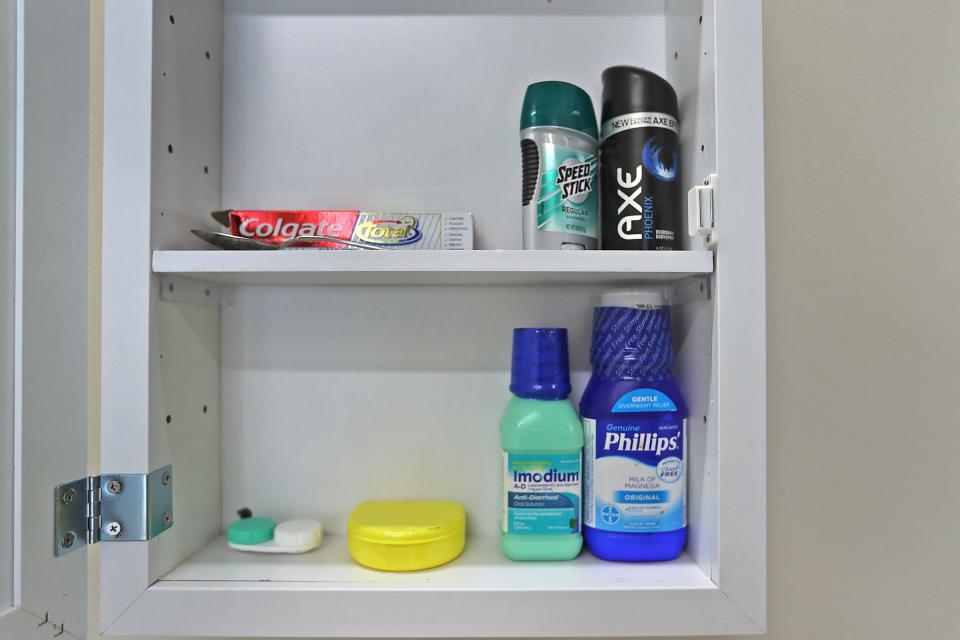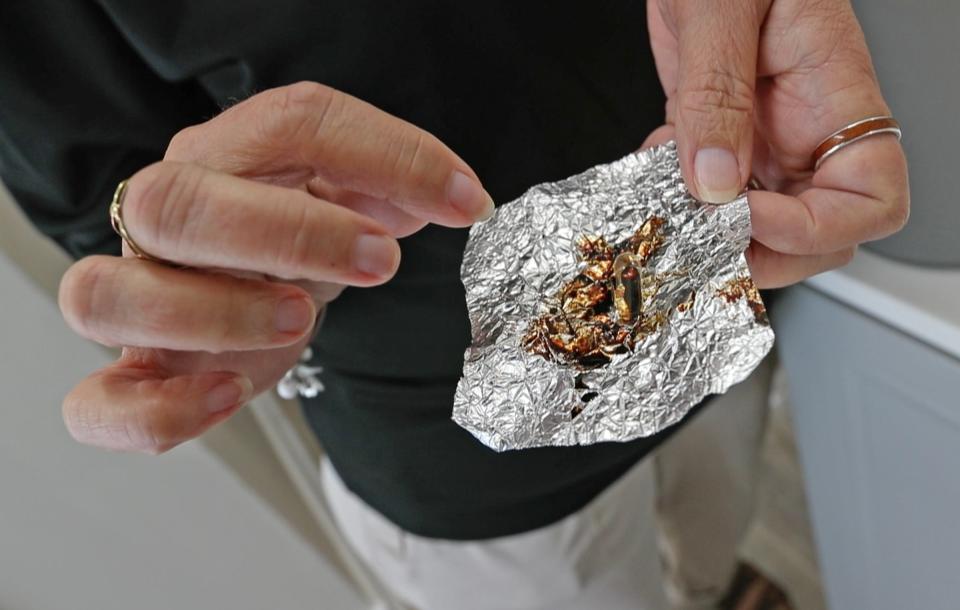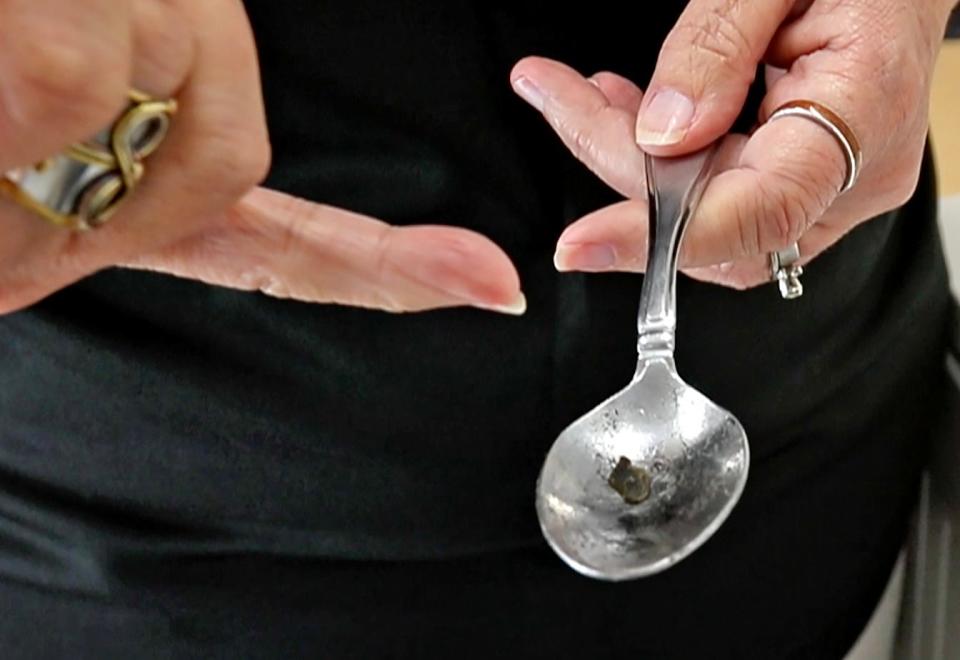Anti-diarrhea medicine, spoons, scales and other signs your teen could be doing drugs
First responders often see the same red flags in homes where a teen has overdosed; now a traveling exhibit will help teach parents what to look for.
Rx Abuse Leadership Initiative, a coalition of community leaders addressing the opioid epidemic, partnered with Code 3, which works to bring citizens and cops together, to create a trailer with a teen bedroom filled with signs of drug use.
Law enforcement experts helped design the trailer, incorporating telltale details that they would often see in homes when they responded to an overdose.
“They would see indicators of drug use all over the room and talk to parents and the parents would not have a clue that the kid was doing drugs,” said David Padgett, who with his wife Carrie is driving the trailer across the country to educate parents.
Funded in part by PhRMA, the pharmaceutical lobby, the trailer has been touring the United States since March.
Carrie Padgett, whose brother died after spending years struggling with addiction, said the trailer has opened some visitors’ eyes to their friends’ or family members’ drug use.
“People are shocked by what they learn in the truck because once you know some of these signs, it’s impossible to ignore it and be in denial,” she said.
Here's what to look for:
Check the medicine cabinet
Padgett starts the tour in the bathroom, because when teens or young adults start using drugs, that’s often the place they choose to hide their stash, since it’s the most private.
In the trailer, the tube of toothpaste on the sink gives away the empty toothpaste box hiding place in the medicine cabinet.

The twin bottles of milk of magnesia and anti-diarrhea medicine are another giveaway that something is amiss, she said. Opioids can constipate a person. Overdo it on the milk of magnesia and you might need the anti-diarrhea medicine for balance.
“They do a little Roulette with the two products to even out their system,” Padgett said.
Look in the trash
Not surprisingly, needles in the trash are a tip-off. Sometimes, parents may find just the plunger, the non-needle side of the syringe, which resembles a marker cover.
Other suspicious items that may be in the trash include empty gel capsules, which are frequently used to transport heroin.

Scorched pieces of tinfoil used to heat crushed opioids, which are mixed with water and then inhaled, are another red flag, Padgett said.
Even something as innocent as a cotton swab can be a clue. A swab missing cotton on one side could have been used to help shoot up heroin, she said. One myth holds that’s a way to filter out impurities in the drug.
Watch the silverware
Spoons are a useful tool in preparing drugs. Missing spoons in a house could be a sign something is awry, Padgett said.

If spoons are scorched on the bottom, that’s another giveaway; spoons can be used instead of tinfoil to heat the drugs.
Take no object for granted
Several seemingly ordinary objects can serve as camouflage safes to stash drugs or paraphernalia – the trailer displays a variety of such safes, including one that looks like a Coke can, a hairbrush, even a Dasani water bottle, whose bottom screws off to reveal a hiding place.
Teens can also create their own version, shaving off the bottom of a deodorant stick to hide the tiny plastic bags in which drugs are stored. Battery compartments for objects as mundane as alarm clocks or video game controllers can also serve as hiding spots.
“Any hollow or void space can be made into a stash,” Padgett said.
Digital scales
Disguised digital scales can provide another clue. The trailer contains two such examples, one a working calculator that slides out to reveal a scale and the other a computer mouse, the bottom of which contains a scale.
Laceless-shoes and other signs of tourniquets
Teens will often use shoelaces as a tourniquet to help find veins, so footwear lacking laces could be a tip-off.
Other common makeshift tourniquets could include neckties and belts. Belts left looped around thinner than a waist could be a sign.
Blood and wall stains
Each time a person injects, a little bit of blood is likely to be shed. Fingertips blackened by heating the drug may leave sooty stains on walls.
Contact IndyStar reporter Shari Rudavsky at 317-444-6354 or shari.rudavsky@indystar.com. Follow her on Facebook and on Twitter: @srudavsky.
READ MORE
Oregon students will be able to take 'mental health days' off, thanks to teen activists
Juul CEO tells parents 'I'm sorry' amid teen vaping 'epidemic'
This article originally appeared on Indianapolis Star: Signs of drug use that can be found in a teen's bedroom

